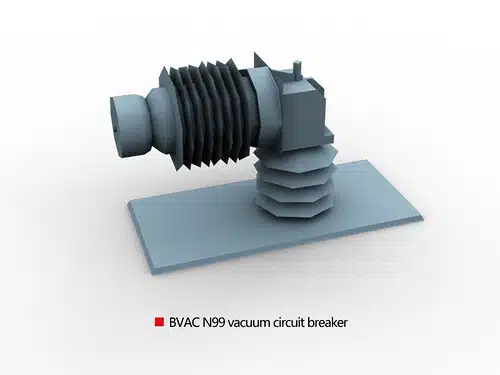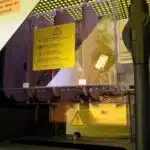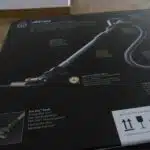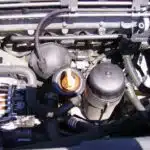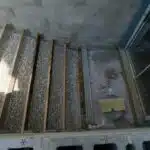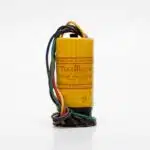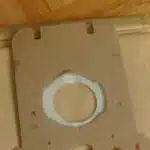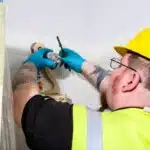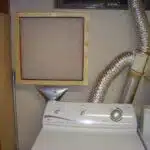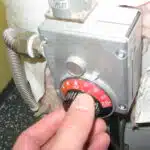As an irrigation system installation technician, it is crucial to understand the importance of a vacuum breaker in maintaining the safety and functionality of the system. A vacuum breaker prevents backflow, which is the reversal of water flow from the irrigation system back into the main water supply. This can be dangerous as it can contaminate the water and cause health hazards. In this article, we will explore how to install a vacuum breaker on an irrigation system, ensuring that it operates efficiently and safely.
Installing a vacuum breaker requires specific knowledge and skills to ensure proper installation and operation. It involves installing a device that protects against backflow by allowing air into the system when there is low or no pressure. This ensures that any potential contamination does not enter the main water supply. As an irrigation system installation technician, it is our responsibility to ensure that every component of the system functions correctly and safely. By understanding how to install a vacuum breaker on an irrigation system, we can help prevent potential health hazards and ensure that our clients’ systems operate efficiently for years to come.
Understanding The Purpose Of A Vacuum Breaker In An Irrigation System
Did you know that at least 10% of irrigation systems experience backflow contamination each year? That’s a statistic that should grab any irrigation system technician’s attention. One way to prevent backflow contamination is by installing a vacuum breaker.
A vacuum breaker is an essential component in an irrigation system as it prevents contaminated water from flowing back into the main water supply. It works by creating a barrier between the main water supply and the irrigation system. Installing a vacuum breaker provides numerous benefits, such as avoiding costly repairs and protecting public health.
However, like any other mechanical device, vacuum breakers can malfunction. Common issues include leaking and failure to open or close properly. These malfunctions can lead to cross-contamination, which puts public health at risk. As such, it is crucial to ensure that your vacuum breaker is functioning optimally at all times.
Identifying The Type Of Vacuum Breaker Needed For Your System
Choosing between atmospheric and pressure vacuum breakers is an important decision when installing one onto your irrigation system. Atmospheric vacuum breakers, or AVBs, are the simplest and most affordable option. This type of vacuum breaker relies on gravity to prevent backflow. Pressure vacuum breakers, or PVBs, are more complex and expensive but offer additional protection against backflow. They are designed to withstand higher water pressures and provide a higher level of safety.
Factors to consider when selecting a vacuum breaker for your irrigation system include the type of irrigation system you have, local codes and regulations, and the specific needs of your system. It is important to make sure that the vacuum breaker you choose meets all applicable standards for your area. Additionally, it is important to select a vacuum breaker with appropriate flow capacity for your system’s needs.
Proper selection and installation of a vacuum breaker is critical in preventing backflow and contamination of potable water sources. Failure to install a vacuum breaker can result in serious health risks as well as costly legal issues if local codes and regulations are not followed. Therefore, it is recommended that you consult with a licensed irrigation professional before making any decisions regarding the installation of a vacuum breaker onto your irrigation system.
When choosing the type of vacuum breaker needed for your system has been determined, the next step is gathering the necessary tools and materials.
Gathering The Necessary Tools And Materials
Now that you have identified the type of vacuum breaker needed for your irrigation system, it is time to gather the necessary tools and materials to install it. Choosing appropriate materials is crucial in ensuring the longevity and efficiency of your irrigation system. Make sure to use high-quality PVC pipes, fittings, and adapters that are compatible with your system’s specifications.
To successfully install a vacuum breaker on your irrigation system, you will need certain tools such as a hacksaw, pipe cutter, PVC cement, screwdriver, Teflon tape, and a wrench. Tips for efficient tool usage include measuring twice before cutting any pipes and using a pipe cutter instead of a hacksaw for smoother cuts. Additionally, make sure to apply Teflon tape on all threaded connections to prevent leaks.
Before starting the installation process, it is important to turn off the water supply to the irrigation system. This step ensures safety during installation and prevents any water damage or leaks. To turn off the water supply, locate the main valve or shut-off switch near the water meter and turn it off in a clockwise direction. Remember to drain any remaining water from the pipes by opening faucets or valves after turning off the main valve.
Overall, installing a vacuum breaker on an irrigation system requires careful planning and execution. By choosing appropriate materials and using efficient tool usage tips, you can ensure a successful installation process that will improve your system’s functionality and safety.
Turning Off The Water Supply To The Irrigation System
To begin the process of installing a vacuum breaker on your irrigation system, it is important to shut off the water supply. This will prevent any potential damage and allow you to work on the system without any interruptions. To do this, locate your main water supply valve and turn it clockwise until it is fully closed. It is important to note that some systems may have more than one valve, so ensure all valves are closed before proceeding.
Once the water supply has been shut off, you can begin draining the system. To do this, open all of the valves on your irrigation system and let them run until they stop spraying water. This will remove any remaining water from the pipes and ensure that there is no residual pressure in the system. If your irrigation system has a backflow preventer or pressure regulator, be sure to release any pressure that may be present in those components as well.
Now that the water has been shut off and drained from your irrigation system, you can move forward with installing your vacuum breaker. Follow manufacturer instructions closely to ensure proper installation and functionality of the device. With a properly installed vacuum breaker, you can rest assured that your irrigation system will function safely and efficiently for years to come.
To prepare for installation of a vacuum breaker on an irrigation system it is critical to first shut off water supply by turning off all main valves until they are fully closed; this helps avoid potential damages during installation and allows uninterrupted work on the system. After shutting off water supply, open all valves on the irrigation system thereby allowing drainage of all remaining water within its pipes; this ensures no residual pressure within or around components such as backflow preventer or pressure regulator which could hamper proper functioning of installed vacuum breaker thereafter. Following these steps carefully would lead to seamless installation of vacuum breakers thereby guaranteeing safe operation and efficiency of irrigations systems for years ahead.
Draining The Irrigation System To Prepare For Installation
Before installing a vacuum breaker on an irrigation system, it is crucial to prepare the system by draining it. Draining the irrigation system removes any water that could potentially cause damage during installation and ensures that the vacuum breaker will work correctly. To do this, there are several drainage methods available, including manual draining and using compressed air.
Manual draining involves opening all of the valves on the irrigation system and allowing gravity to drain out any remaining water in the pipes. On the other hand, using compressed air involves introducing air into the pipes through a compressor to push out any remaining water. Regardless of which method is used, precautions should be taken during drainage to avoid damage from water or air pressure, such as wearing protective gear and ensuring proper ventilation.
To effectively drain an irrigation system before installing a vacuum breaker, it is essential to follow these precautions:
- Ensure all electrical connections are turned off before starting
- Wear safety goggles and gloves
- Use caution when handling compressed air or water under high pressure
- Make sure there is adequate ventilation in the area where drainage occurs
With these precautions in mind, draining an irrigation system can be done safely and efficiently, making way for proper installation of a vacuum breaker. The next step in this process is locating the ideal placement for the vacuum breaker.
Locating The Ideal Placement For The Vacuum Breaker
Determining appropriate placement for a vacuum breaker is crucial to ensure the proper functioning of an irrigation system. Factors affecting vacuum breaker placement include the type of irrigation system, local code requirements, and proximity to potential hazards.
Firstly, the type of irrigation system being used will determine where the vacuum breaker should be placed. A drip irrigation system will require a different placement than a sprinkler system. The location of the main water supply line will also need to be considered when determining where to install the vacuum breaker.
Secondly, local code requirements must be taken into account when deciding where to place the vacuum breaker. Local codes may specify certain distances from potential hazards such as swimming pools or wells. It is important to research and adhere to these regulations to avoid any safety issues down the line.
Lastly, it is essential to consider proximity to potential hazards when placing a vacuum breaker on an irrigation system. Hazards such as chemicals or fertilizers can contaminate water sources if not properly separated from the main water supply line by a vacuum breaker. Additionally, backflow from contaminated water sources can pose health risks for those consuming the water.
In summary, determining appropriate placement for a vacuum breaker involves considering factors such as irrigation system type, local code requirements, and proximity to potential hazards. Careful consideration of these factors can help ensure that an irrigation system functions properly and safely for all involved parties. In the following section, we will discuss how to install a vacuum breaker onto your irrigation system in detail.
Installing The Vacuum Breaker Onto The Irrigation System
Like the heart of a human body, the vacuum breaker is an essential component of an irrigation system. It prevents backflow and contamination of potable water supply by separating it from the non-potable water source used in irrigation. Installing a vacuum breaker is crucial to safeguard against health hazards and keep your irrigation system running efficiently.
To install a vacuum breaker on your irrigation system, you will need to locate the right spot for installation, usually at the highest point in the system. After that, cut out a small section of pipe where you want to install the vacuum breaker. Then, attach the vacuum breaker onto the pipe using compression fittings or glue. Always ensure that the arrow on top of the vacuum breaker points upward for proper operation.
Importance of maintenance cannot be overemphasized when it comes to vacuum breakers. Periodically checking or testing them can save you from costly repairs and replacements down the line. Troubleshooting tips include checking for leaks or debris clogging up inside. If your vacuum breaker fails to operate correctly, seek help from a qualified technician immediately to avoid any health risks due to backflow or contamination.
Transition: Now that we have installed and understood how important maintenance is for our vacuum breakers let us move on to connecting them to our main water supply line without any errors.
Connecting The Vacuum Breaker To The Water Supply
To connect the vacuum breaker to the water supply, you will need a few tools: Teflon tape, pipe wrenches, and an adjustable wrench. Before beginning, ensure that the water supply is turned off. Start by wrapping Teflon tape clockwise around the male threads of the vacuum breaker. This ensures a tight seal when connecting it to the female threads of the water supply.
Next, use a pipe wrench to hold onto the fitting on the water supply side while using an adjustable wrench to tighten the nut on the vacuum breaker side. Make sure not to over-tighten as this could cause damage or leaks in the future. Also, be careful not to cross-thread when connecting these pieces together.
Common mistakes to avoid during this step include forgetting to turn off the water supply before making any connections and not using Teflon tape for a proper seal. Additionally, make sure that all connections are tight but not over-tightened as this can cause damage to both components. Once connected, move on to securing the vacuum breaker in place.
Securing The Vacuum Breaker In Place
After mounting the vacuum breaker on the irrigation system, it is important to secure it in place so that it does not move or become detached. Anchoring methods of the vacuum breaker are essential for ensuring that it remains in position and functions optimally. The method used depends on the type of vacuum breaker installed.
Anchoring methods include the use of clamps or brackets to secure the vacuum breaker onto a sturdy surface. Weather-resistant materials are necessary to ensure that they withstand harsh weather conditions and do not corrode over time. Brackets should be placed at specific intervals to support the weight of the vacuum breaker.
In addition, anchor bolts may also be used to hold the vacuum breaker in place. These bolts should be made from stainless steel or other durable materials to prevent corrosion. They should be securely fastened onto a solid surface such as concrete or brick. This ensures that they do not vibrate loose over time, which can cause damage to both the irrigation system and surrounding areas. Once securely anchored, testing can commence to ensure proper operation of the vacuum breaker.
Transition: With proper anchoring methods in place, we can now proceed with testing the vacuum breaker for proper operation.
Testing The Vacuum Breaker For Proper Operation
To ensure proper operation of the vacuum breaker, it is important to conduct testing procedures after securing it in place. One way to test the vacuum breaker is by using a test cock key to open the test cocks on the device. Once opened, water should immediately flow out of the device and stop when closed. If water continues to flow or there is no water flow, then troubleshooting techniques will be necessary.
Troubleshooting common installation issues can save time and money for both technicians and clients. If there is no water flow from the vacuum breaker after opening the test cocks, check if there is a blockage or debris in the device’s outlet or inlet screens. Additionally, inspect if there are any kinks or damage in the tubing that connects to the irrigation system. If these do not resolve the issue, then further inspection may be necessary.
If water continues to flow out of the device even when closed, then possible causes include a damaged valve seat, diaphragm or springs within the vacuum breaker. These parts may need replacing or repair. Always refer back to manufacturer instructions when repairing or replacing parts. By conducting testing procedures and utilizing effective troubleshooting techniques, one can ensure that an installed vacuum breaker operates properly and efficiently for years to come.
Moving onto troubleshooting common installation issues, one common issue is a leaking vacuum breaker due to incorrect installation procedures.
Troubleshooting Common Installation Issues
Common challenges may arise during the installation of a vacuum breaker on an irrigation system. One common issue is the incorrect installation of the breaker, leading to leaks and water damage. To avoid this, it is crucial to read and follow the manufacturer’s instructions carefully. Another challenge is selecting the appropriate size of vacuum breaker for your irrigation system. It is important to ensure that the size of the vacuum breaker matches that of the pipe diameter.
If you encounter any issues during installation, there are troubleshooting tips that can help resolve them. If there are leaks, check the connections and tighten them if needed. If tightening does not work, consider replacing damaged fittings or gaskets. Additionally, ensure that there are no obstructions in the valve or device that may cause leaks.
To maintain the longevity of your vacuum breaker, regular maintenance is essential. Inspect it periodically for any visible signs of wear and tear such as cracks or rusting. Clean it regularly with water or compressed air to remove debris buildup that can compromise its functionality. Regular maintenance can help prevent future problems and extend the life of your vacuum breaker.
Transition: Now that we have discussed how to troubleshoot common installation issues let us explore ways to maintain a vacuum breaker for optimal performance and longevity.
Maintaining The Vacuum Breaker For Longevity
After troubleshooting common installation issues, it is time to focus on the maintenance of the vacuum breaker. Before delving into the importance of testing and cleaning procedures, it is essential to investigate the theory that a vacuum breaker prevents backflow in an irrigation system accurately. A vacuum breaker uses air pressure to prevent water from flowing back into the supply line and contaminating clean water sources. Without a properly functioning vacuum breaker, non-potable water such as fertilizers or pesticides could enter your drinking water supply.
To ensure longevity of your irrigation system and prevent contamination of clean water sources, regular testing and cleaning procedures are crucial. Here are three essential steps for maintaining your vacuum breaker:
- Regularly test your vacuum breaker by turning off the main water supply and opening the test cocks on both sides of the device. If there is no discharge from these cocks or if they do not close completely, then your vacuum breaker is not functioning correctly and should be replaced immediately.
- Clean your vacuum breaker at least twice a year by removing any debris or sediment that may have accumulated inside. Also, check for any signs of wear or damage to parts such as rubber washers or springs.
- Replace damaged parts immediately to ensure proper functioning of your vacuum breaker.
In addition to regular maintenance, it is crucial to ensure compliance with local regulations and codes when installing a vacuum breaker in your irrigation system. Failure to comply with these regulations could result in penalties or legal action. Thus, always consult with an experienced irrigation system installation technician who can guide you through the process while ensuring compliance with local laws and regulations regarding backflow prevention devices.
Ensuring Compliance With Local Regulations And Codes
Understanding local regulations and codes is crucial when it comes to installing an irrigation system. Compliance with these regulations ensures that the system is safe and effective, and that there are no negative impacts on the environment or public health. Failure to comply can result in fines, legal action, and even the shutdown of the irrigation system.
As an irrigation system installation technician, it is my responsibility to ensure that all installations meet local regulations and codes. This involves understanding the specific requirements for vacuum breakers in the area where the installation will take place. Vacuum breakers are essential components of any irrigation system as they prevent contaminants from entering the water supply.
Compliance with local regulations goes beyond just installing a vacuum breaker; it also involves maintaining it regularly to ensure its continued effectiveness. As such, educating clients on the importance of proper vacuum breaker installation and maintenance is crucial. By doing so, we not only ensure compliance but also promote safety and environmental responsibility in our communities.
Educating Clients On The Importance Of Proper Vacuum Breaker Installation
As irrigation system installation technicians, we understand the importance of educating our clients on the proper installation of vacuum breakers. Failure to install these devices properly can have serious consequences and potentially harm both people and the environment. Therefore, it is important for us to emphasize the significance of this issue and ensure that our clients understand the risks associated with improper installation.
Regular maintenance is crucial for any irrigation system, including the installation of vacuum breakers. Neglecting regular maintenance can lead to a variety of problems such as leaks, corrosion, and even backflow into the potable water supply. As a result, it is essential that clients understand the importance of regular maintenance in order to keep their irrigation systems functioning properly.
Improper installation of vacuum breakers can also have significant impacts on both human health and environmental safety. For example, if a vacuum breaker is not installed correctly and there is a backflow event into the potable water supply, contaminants such as pesticides or fertilizers could enter the drinking water system. This can be extremely dangerous for human consumption and pose serious health risks. Therefore, it is paramount that clients understand how improper installation can impact their community’s overall well-being.
- Regular maintenance should include inspections for leaks or damage to vacuum breakers.
- Clients should be advised to replace any damaged or worn components immediately.
- The use of high-quality materials during installation can help reduce future issues.
- Clients should be reminded to schedule routine inspections with qualified professionals.
- Clients should also be educated on seasonal adjustments necessary for optimal performance.
Providing continued support and maintenance for irrigation systems is essential in ensuring proper function and safety. As professionals in this field, it is our duty to educate our clients on proper installation techniques while emphasizing regular maintenance schedules as well as providing them with ongoing support for their systems long after initial installation has been completed.
Providing Continued Support And Maintenance For Irrigation Systems
Preventive measures are crucial in ensuring the longevity and efficiency of irrigation systems. Regular maintenance checks can help detect issues before they become more severe, saving homeowners time and money on costly repairs. It is recommended to have a professional technician perform an annual inspection of the system to identify any potential problems.
Irrigation systems may still experience malfunctions despite preventive measures, which is why it is essential to have access to reliable repair services. A malfunctioning irrigation system can cause significant damage to landscaping and surrounding structures, leading to even more expensive repairs. Homeowners should seek out skilled professionals with experience in repairing irrigation systems when issues arise.
In addition to regular maintenance checks and repair services, homeowners can take steps to ensure their irrigation system operates efficiently. These steps include monitoring water usage, adjusting watering schedules according to seasonal changes, and installing vacuum breakers. By implementing these measures, homeowners can enjoy a well-functioning irrigation system that supports healthy plants while minimizing water waste.
Conclusion
Proper installation of a vacuum breaker in an irrigation system is crucial to prevent backflow and contamination of the water supply. It is important to understand the purpose of a vacuum breaker and identify the type needed for your system. Gathering necessary tools and materials, turning off the water supply, draining the system, and maintaining the vacuum breaker are all important steps in installation. Compliance with local regulations and educating clients on proper installation can help ensure safe water usage.
According to a study by the Environmental Protection Agency, approximately 10% of public water systems experience at least one incident of backflow or backsiphonage each year. This highlights the importance of proper installation and maintenance of vacuum breakers in irrigation systems to prevent contamination. As irrigation system technicians, it is our responsibility to prioritize safety and compliance in our work to protect both people and the environment. By following best practices and staying up-to-date on regulations, we can provide quality support for our clients’ irrigation systems.
Image Credits
- “Vacuum circuit breaker” by ocemy (featured)

